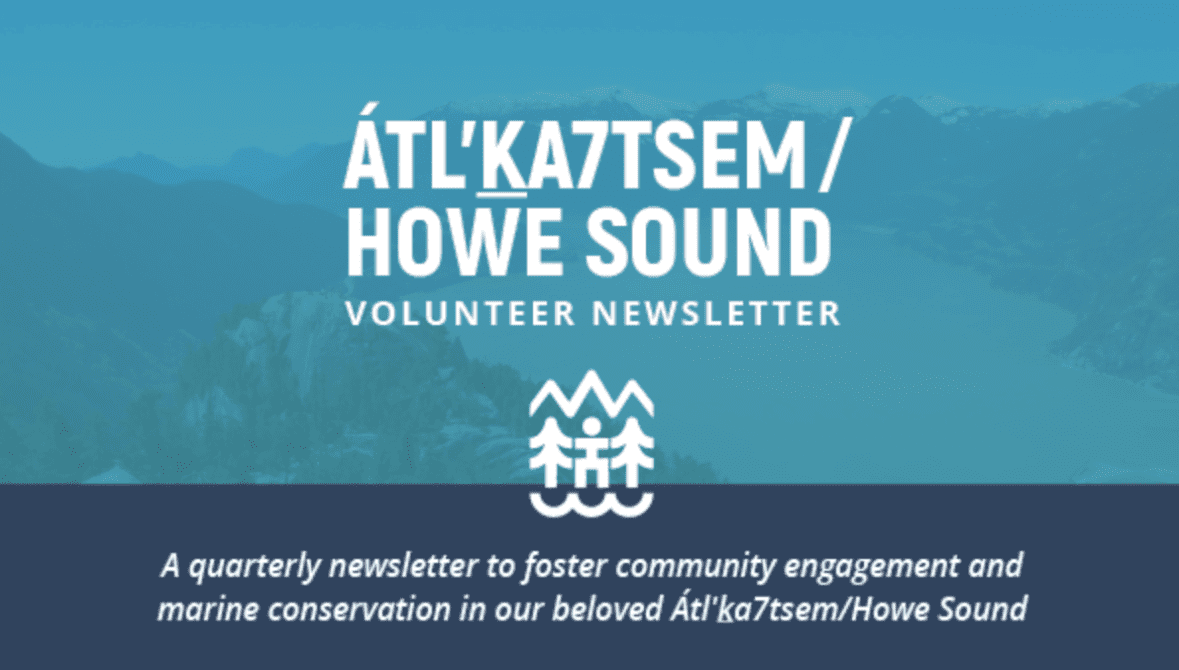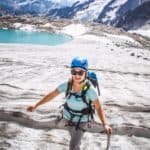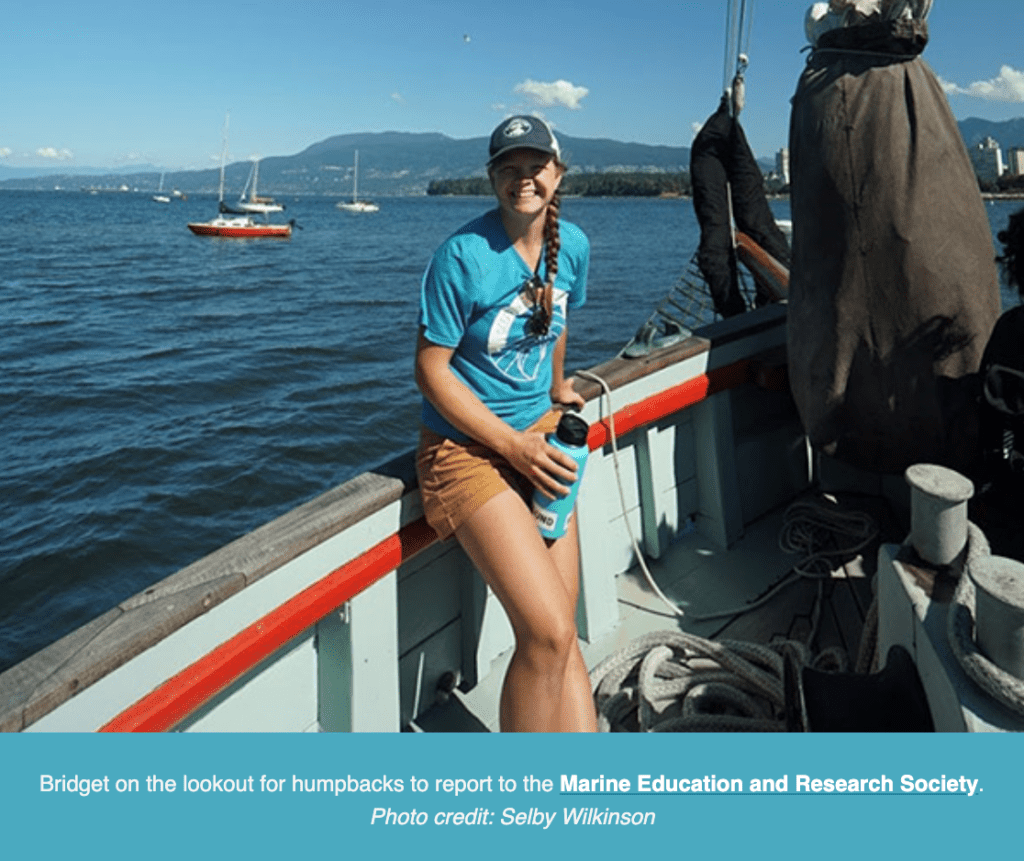Howe Sound Átl'ka7tsem Volunteer Newsletter

Project Details
Location

Project Lead
A quarterly volunteer newsletter (completed in collaboration with the Átl'ka7tsem/Howe Sound Biosphere Region Initiative, Marine Reference Guide) to help people get involved in conservation work in Átl'ka7tsem/Howe Sound.
Project Description
There are many groups doing inspiring work in the Howe Sound/Átl’ka7tsem (one of the Squamish place names for Howe Sound) region, from citizen scientists to larger non-profit organizations. However, sometimes it’s hard to know who’s doing what, where and when. Also it’s hard to know what opportunities and events are out there for community members to take part in to work toward the common goal of a healthy Sound.
This quarterly volunteer newsletter (completed in collaboration with the Átl’ka7tsem/Howe Sound Biosphere Region Initiative, Marine Reference Guide) is meant to spark interest for others to become involved in protecting the Sound’s environment, share good news stories and upcoming events relating to Átl’ka7tsem/Howe Sound’s marine and freshwater.
Keep up with the newsletter here: https://www.howesoundbri.org/newsletter-archive.
Biggest Challenge
The biggest challenge was starting as it usually is for any new project! As I work for the Howe Sound/Átl’ka7tsem Marine Reference Guide and work closely with the Howe Sound Biosphere Region Initiative it was very helpful to be able to collaborate with them and send the newsletter out to a large contact list, which I wouldn’t have had if there wasn’t collaboration.
Valuable Takeaway
Collaboration is key to any successful project. One of the core problems in the vast Salish Sea is a lack of connectivity and continuity across communities and groups that conduct research, restoration, and marine spatial planning (MSP). Often communities and groups develop projects in silos without sharing information or methods outside of their organization until they are finished.
Working in the Sound, I’ve come to realize that there are so many groups doing amazing work but a lot of the time they work in silos. Reach out to different groups and see if they have a project you could lead or propose a project to them if it aligns with their goals. Or create your own project and collaborate with different groups around you. The more you collaborate with various groups the better in my opinion. If we can bridge the gaps between organizations and communicate effectively, there will be less overlap and more cohesion.

